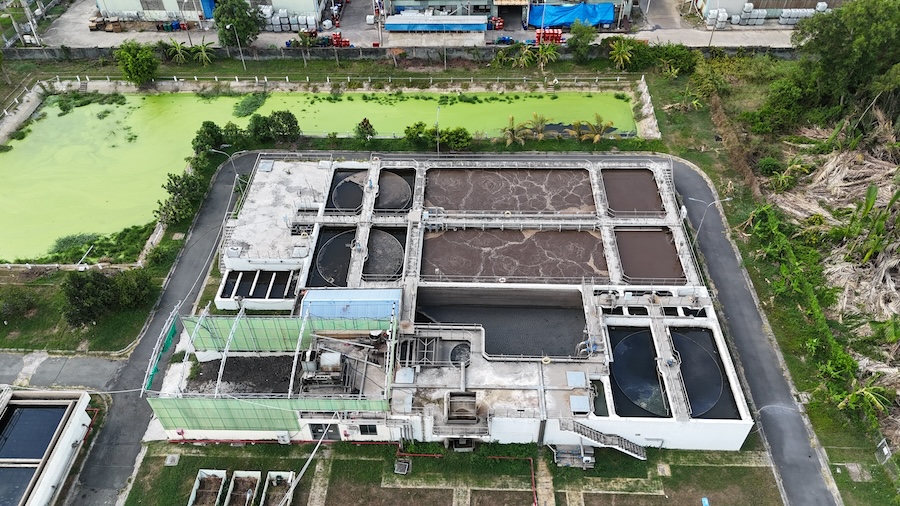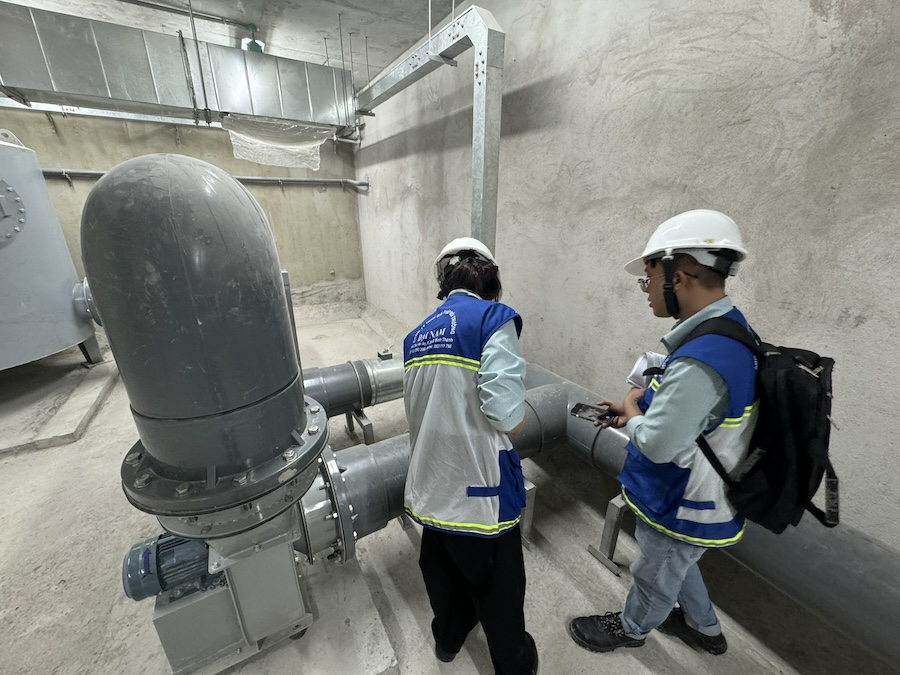In a wastewater treatment system, the design capacity is the key metric that ensures the system meets the required treatment demand. However, due to changes in production scale or long-term operation, the system can become overloaded if not assessed and adjusted in time. Regular monitoring, inspection, and evaluation of the actual operating capacity are essential to ensure that the treated effluent consistently meets regulatory standards and to avoid potential environmental risks.
1. What is Wastewater Treatment Capacity?
Wastewater treatment capacity is a technical indicator that reflects the maximum ability of a wastewater treatment system to receive and treat a certain amount of water over a specific period—commonly measured in m³/day. This is the basis for designing treatment tanks, selecting equipment, and planning operations that match actual flow and pollution load. Treatment capacity is typically determined at the project planning stage and represents the system’s maximum stable operating ability without overloading.
In practice, there is a difference between the design capacity (initial stage) and the actual operating capacity (during system operation). Many businesses, when expanding production, increasing staff, or changing wastewater characteristics, may find their system overloaded if no adjustments are made. In such cases, the original treatment capacity becomes insufficient, leading to technical, environmental, and legal issues. Understanding and monitoring treatment capacity is a necessary condition to maintain efficient and sustainable operation.

Learn more about: What is wastewater treatment capacity?
2. When Should You Assess Current Capacity?
-
After a change in production scale: When the plant expands its production lines, increases workforce, or changes technology, it often leads to an increase in wastewater flow or a shift in the characteristics of incoming water.
-
When treated water quality fails to meet standards: Indicators such as BOD, COD, TSS, ammonium, or coliform exceeding QCVN thresholds indicate reduced treatment efficiency.
-
When signs of overload or odor appear: Frequent tank overflows, incorrect retention times, dying microorganisms, or strong odors are clear signs of system overload.
3. Signs That the Capacity is No Longer Sufficient
3.1 Operational Signs
When the wastewater treatment system begins to exhibit overflow, clogging, or imbalance in flow between units, it's a clear indicator that the system may be operating beyond its design limits. Another common sign is that activated sludge is being washed out of settling tanks or biological units are operating unstably. These issues reduce treatment efficiency and can disrupt the entire system if not promptly addressed.
3.2 Signs from Effluent Quality
If the treated effluent exceeds permissible limits for TSS, COD, BOD, or ammonium as per QCVN, it shows the system can no longer effectively remove pollutants. Additional symptoms such as abnormal color or persistent odors often indicate a significant decline in biological or physico-chemical treatment performance. This requires a full evaluation of the system’s capacity and operation strategy to avoid environmental violations.
4. How to Check and Assess Current Capacity
-
Compare actual wastewater flow with design capacity: Measure average daily or hourly inflow and compare it with the original design figures. If actual flow exceeds design capacity for an extended period, the system may be overloaded.
-
Analyze treatment efficiency of key indicators: Evaluate how effectively the system removes BOD, COD, TSS, and ammonium at each stage. If removal efficiency drops (e.g., COD only reduced by 60–70% instead of ≥90%), excess loading could be the cause.
-
Review hydraulic retention time (HRT) and F/M ratio: Recalculate retention time and food-to-microorganism (F/M) ratio. If HRT is too short or F/M is too high, it is likely that current capacity is no longer suitable for actual conditions.
5. Solutions When Capacity Is No Longer Adequate
-
Upgrade or expand the treatment system: Add tank volume, expand treatment zones, or apply advanced technologies such as MBR, SBR, or AAO to improve performance without significantly increasing footprint. Equipment upgrades and process optimization also enhance overall capacity.
-
Optimize operations and manage inflow load: Adjust operating schedules according to peak and off-peak hours, install batch collection systems, or apply pre-treatment at the source to ease the load on the main system. This temporary solution can stabilize performance while waiting for upgrades.
-
Hire a professional unit to assess and retrofit the system: Collaborate with experienced consulting firms to measure flow, analyze water quality, assess actual performance, and propose suitable retrofitting plans. This is a safe approach that ensures legal compliance and long-term technical efficiency.

Đại Nam is a trusted consulting and construction unit specializing in designing, upgrading, and optimizing wastewater treatment systems that meet QCVN standards.
Wastewater treatment capacity is not just a technical figure—it reflects the alignment between treatment ability and real-world operating conditions. Regular inspection, early detection of irregularities, and proactive improvement planning will help ensure stable operations, long-term efficiency, and full regulatory compliance.

